Start 14-Day Trial Subscription
*No credit card required

6 Japanese Craft Breweries to Sample in the US
Beer came to Japan by way of Dutch traders in 17th century Nagasaki, but the art of brewing had been firmly established for thousands of years. Thanks to the country’s time-honored sake brewing tradition, beer brewing caught on quickly.
By 1853, Koumin Kawamoto, a doctor of Dutch medicine, was brewing the country’s first documented test-batch by following a description in a Dutch book. The country’s first brewery for the Japanese market came in 1870, when American William Copeland founded the Spring Valley Brewery in the settlement of Yamate, Yokohama. The next few decades were a time of great prosperity for Japanese brewing, until two familiar hurdles hit the industry: consolidation and legislation.
The consolidation in question came in 1906, “for the purpose of preventing excessive domestic competition, promotion exports and concentrating capital.” A couple years later, a change to the Beer Tax Law made the minimum quantity of beer necessary to be produced to obtain a manufacturing license increased to 180Kl (roughly 1130 bbls), making small-scale enterprises nearly impossible to run. That quantity would increase tenfold in 1940, and again to 2,000Kl in 1959.
But everything would change in 1994, when the minimum production quantity required for a beer manufacturing license was dropped all the way to 60Kl, a little less than 380 bbls. Thus began Japan’s craft beer revolution.
According to the Japanese Food Product Overseas Promotion Center (JFOODO), which is helping bring the country’s craft beer scene overseas, “Beer has long been the most consumed alcoholic beverage in Japan, and it plays an essential part in the modern Japanese dining culture. So it is natural that we are seeing an increase in the number of craft breweries since the license became obtainable for microbreweries in 1994 and especially in recent years. Similar to the U.S. trend, craft breweries in Japan start and grow with their local communities."
Now, with hundreds of breweries dotting the island, beer is the most popular beverage in Japan, and the country is bringing its craft beer to the U.S., along with a fresh sensibility that promises an invigorating blend of new ideas and time-tested tradition.
With centuries of artisanal heritage, an acute attention to detail derived from traditional sake brewing, and a kaleidoscopic range of seasonal ingredients, Japanese craft beer has much to offer the world of beer. Here are some of its most highly regarded brewers.
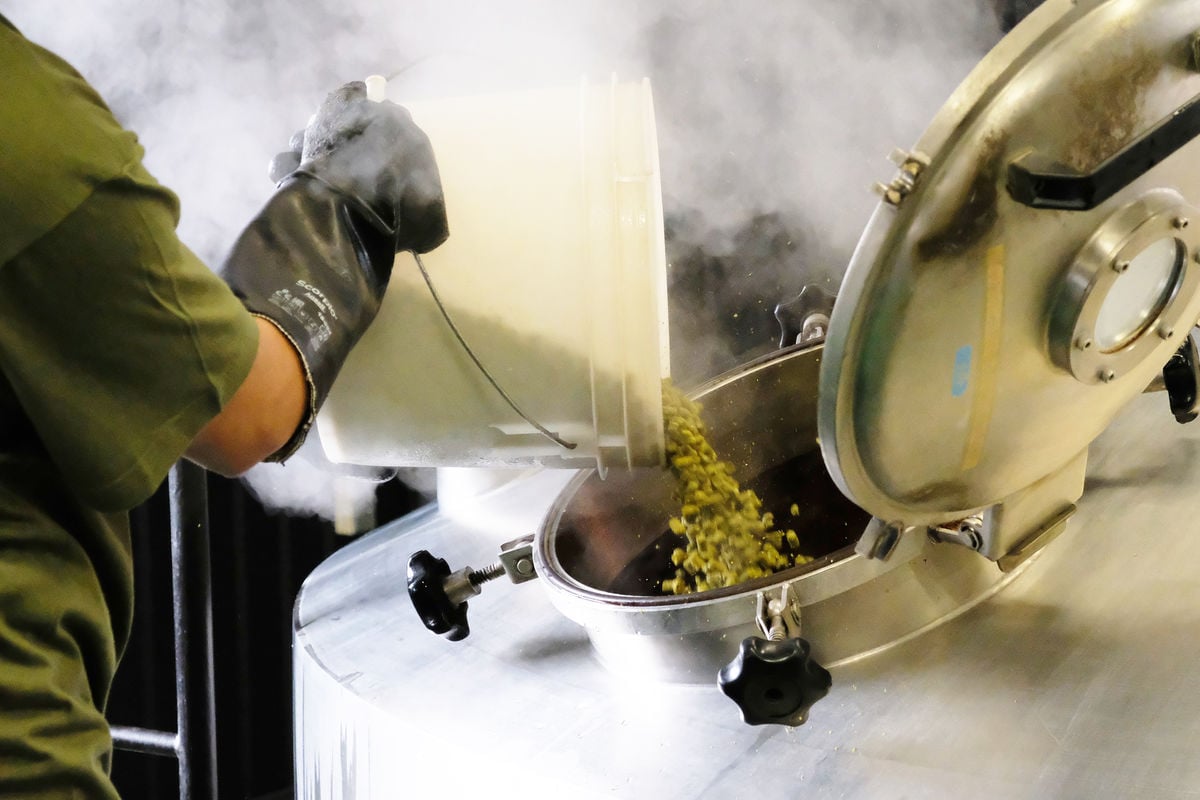
Coedo Brewery
Coedo Brewery began as a venture by Kyodoshoji Corp., a distributor for organic vegetables. Japan’s supermarkets boast some of the world’s strictest quality and appearance standards, meaning around 40 percent of all produce is deemed unfit for sale. Naturally, the company began looking for ways to utilize all those discarded fruits and veggies.
Coedo began experimenting with various kinds of local produce to brew with, before settling on sweet potato as an alternative to malted barley. Despite this scientific breakthrough, and the distinction of brewing the world’s first sweet potato beer, the fledgling company lacked brewing expertise, so they brought in veteran German brewer Christian Mitterbauer in 1997. He would remain with the company for the next five years, helping to brew and to train others to brew.
Right when Coedo began to get its sea legs, the initial craft beer boom in Japan slowed, thanks largely in part to a flood of low-quality offerings from mom-and-pop brewers, leaving the fate of the company in question. Enter longtime employee Shigeharu Asagiri, who became CEO in 2006 and helped steer Coedo away from danger. By focusing on higher-quality brews, new packaging and premium shelf space, he began laying the groundwork for the eventual expansion and export of Coedo’s products. Today, Coedo exports about 30 percent of its beer to over a dozen countries in Asia, Europe and North America, making it one of the country’s most successful craft brewers.
2016 saw the brewery move to a new location further from the nation’s capital, which Asagiri believes will help Coedo keep itself “rooted in agriculture,” where it all began. The next step? Turning the former factory space into a destination brewery. Until then, we’ll just have to make do with sampling its beers.
Beniaka is an “Imperial Sweet Potato Amber” made using locally grown, roasted Kintoki sweet potatoes, adding caramel notes to its luxurious bouquet. Rich and smooth-bodied, it pours a bold crimson. Though striking, its bold coloration is no marketing gimmick – it’s all natural, fitting Coedo’s aim to strive for “exquisite, delicately balanced” beer rather than to create “flashy” drinks. Still, it all works quite nicely, considering Beniaka refers to both a type of sweet potato and a shade of red.
Shiro (which translates to “white” in English), is a hefeweizen “with a bright hue and a soft, milky white glow – a natural effect from the types of yeast used” – a perfect contrast to the sultry Beniaka. This is a subtle, gentle beer; the yeasts used within were chosen specifically for their ability to draw out the sweetness from wheat, a pleasant complement to the fruitiness of the hops.
Shikkoku, or “jet black,” is made with two types of black malt and six other malt varieties, which are then slow-aged to create a well-balanced lager that is smooth, light and mellow. The stygian hue of this beer is contrast by its lively light brown head, which throws off surprisingly hop-forward aromas.
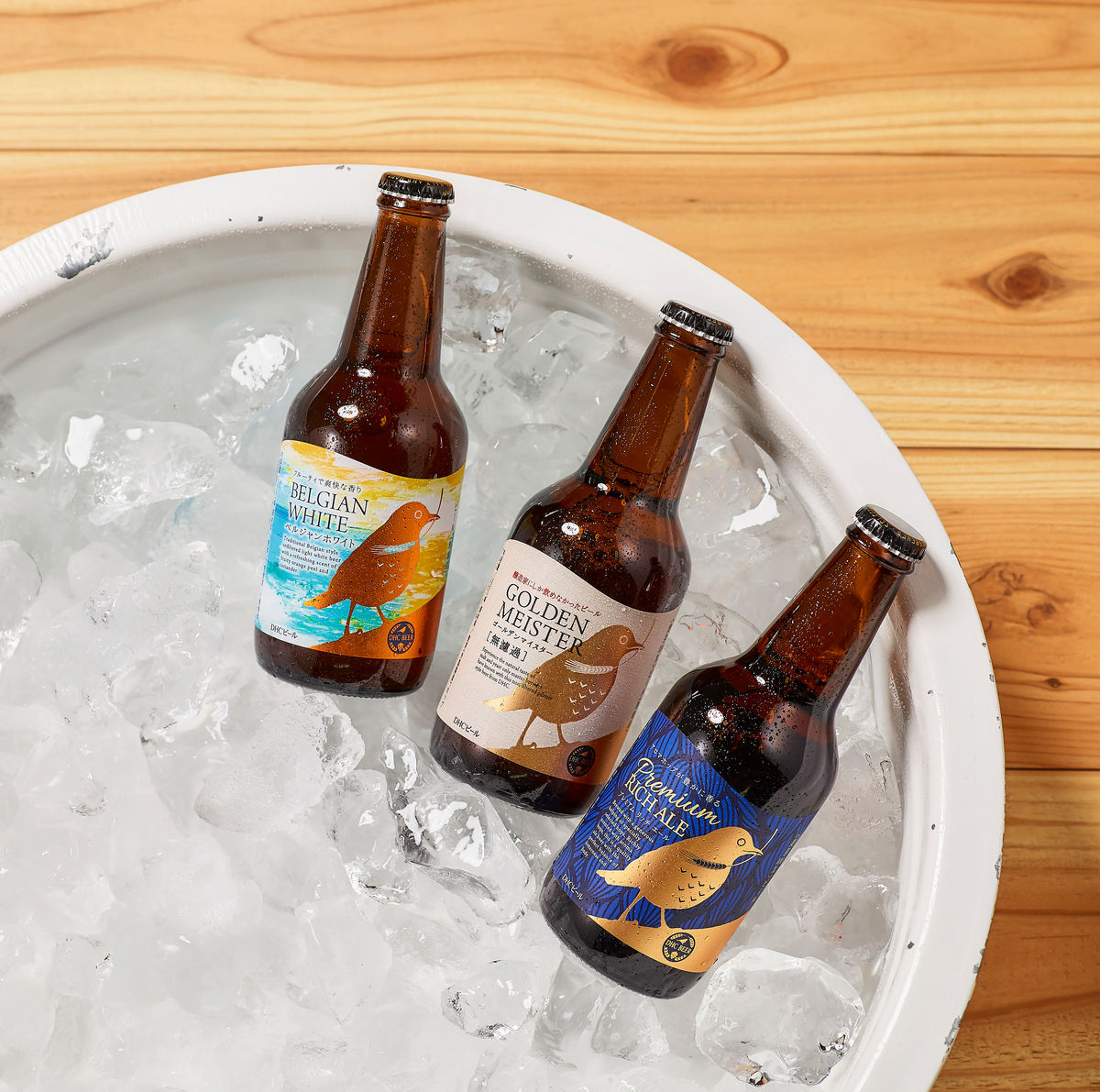
DHC Beer
Founded in 2015, DHC Beer Co. is a relative newcomer to the Japanese beer industry. Though it’s only just come in atop a recent wave of new brewers, DHC is already making waves of its own through its commitment to purity – and that starts with its water supply, as good as any you’ll find in the world.
The brewery is located in the city of Gotemba, which lies at the base of Mount Fuji. As a result, the water it receives has filtered through the mountain over the course of fifty years to create a singularly soft, pure base for beer. What starts as snow decorating the symbolic Mt. Fuji’s peak ends up in your glass half a century later.
DHC then uses specially selected ingredients to complement the mildly alkaline water, enabling it to produce extremely refined beers with exacting accuracy.
Golden Meister is an unfiltered pilsner, which gradually mellows and sweetens as it warms. As you may have guessed, the beer follows the German tradition, even using German malt, but still retains an element of Japanese creativity. The house yeast creates a base for this dual-hopped, 5% ABV thirst-quenching lager.
Belgian Style Beer is an unfiltered witbier, and the remaining yeast creates a spritzy and engaging tartness to enliven this mellow ale. The typical invigorating aromas of coriander and orange peel mingle delightfully with the wheat for a “distinctly Japanese” melange.
Premium Rich Ale boasts a bouquet of zesty grapefruit, thanks to its impactful use of citrusy hop varietals, which emanate from a blend of three different malts. It is recommended to enjoy this beer at 54 degrees Fahrenheit, in order to allow the flavors to truly develop.
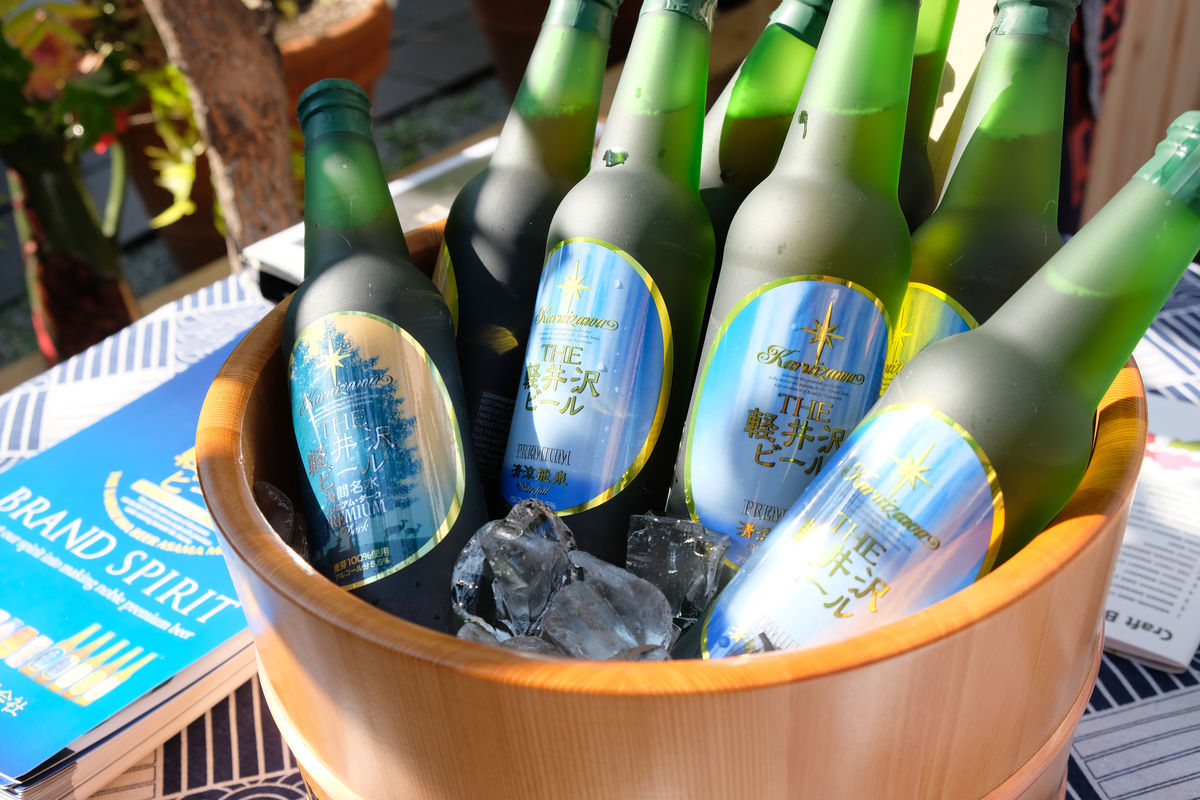
Karuizawa Brewery
Karuizawa Brewery is another recent addition to Japan’s craft beer landscape, opening in 2013. The brewer is located in the resort town of Nagano, northwest of Tokyo, which played host to the 1998 Winter Olympics.
Head brewer Oka Shin’ichiro uses the pure, hard waters of nearby Mount Asama to craft beers he describes as “clean and easy to drink,” stating: “I wanted to make a beer that is different from those of mainstream producers and yet also different from so-called ji-beers.” In other words, something drinkable for all, rather than an overwhelmingly bitter or sweet brew. These roads always lead back to a focus on bringing the most out of a beer’s core elements, and in that respect, Karuizawa’s beer doesn’t disappoint. Each beer is treated as a work of art, both with its packaging and the elixir it contains.
Seiryo Hisen Premium bears an image of contemporary Tokyo artist Hiroshi Senju’s Waterfall, part of a brewer/artist collaboration a la Ralph Steadman and Flying Dog. Fittingly, “Seiryo Hisen” translates into English as “refreshing waterfall.” Within the bottle you’ll find a golden ale defined by crisp hop bitterness, fine bubbles and a smooth, clean finish. Think of each sip like a waterfall but more aromatic, with notes of grapefruit and Muscat grape emanating from a creamy white foam cap.
Premium Dark features another evocative painting by Senju, titled “On the Night with Stars II,” along with a mellow mouthfeel that makes it a beer to savor. This all-malt brew boasts dark copper hues with a toasty quality before gracefully ending with a touch of sweetness. The decoction method with which it is brewed allows an umami quality to emerge, and a late-hop addition lends an aromatic layer of delight. Karuizawa Brewery recommends that “Premium Dark” is enjoyed with a savory meal, such as a nice Bavarian-style sausage.
Weiss is a traditional Bavarian-style weissbier, top-fermented with fitting banana notes. Light in color and perfectly refreshing, Karuizawa recommends it with an Italian cheese plate.
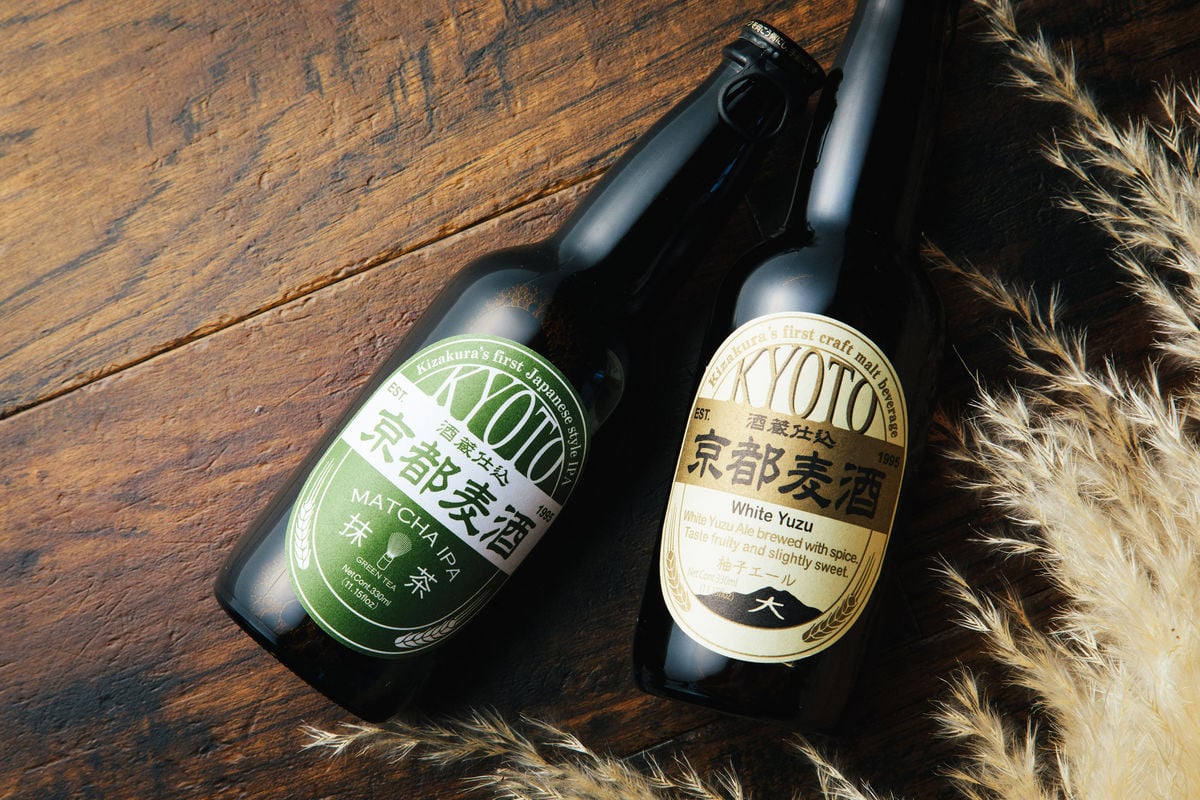
Kizakura
Kizakura is a true legacy name in Japan. Not only is it one of the country’s oldest craft beer brewers, operating since 1995, but it’s also one of the largest sake breweries in Japan and has been in operation since 1925. If you happen to find yourself in the region, you can tour their museum, which walks you through both the beer and sake-making process and allows for tastings and purchases.
As you may have noticed, attention to water quality is of prime importance to the Japanese brewer, and Kizakura’s supply is also quite special, as it originates from the Fushimi area of Kyoto, which is famed for the purity of its spring water. The brewery also calls on its sake yeast to impart unique attributes to its beer, highlighting an element of brewing unique to Japan.
Kyoto Beer Matcha IPA brings more unique elements to the table, utilizing Uji green tea to create a green-tinted beer that brings to mind the famed Japanese matcha. Matcha combined with copious amounts of hops result in a potent 8.5% ABV IPA unlike any other you may have had.
The unique offerings continue with Kyoto Beer White Yuzu Ale, which masterfully combines yuzu with coriander for a summery profile similar to a Belgian White that’s somehow more… Japanese!

Miyazaki Hideji Beer
Brewing since 1996, you’ll find Miyazaki Hideji Beer in the southern isle of Kyushu, where it cultivates killer ales by going far beyond the realm of the ordinary brewer. Beginning in 2006, Miyazaki Hideji Beer began storing over 200 varieties of yeast cultures to further tailor every batch to exacting specifications. Maintaining this yeast “library” is anything but simple, requiring constant, delicate temperature and humidity control. But the results are well-worth it -- yielding highly drinkable ales that allow the natural elements of beer to shine.
Miyazaki Hideji can also draw from a wellspring of local produce, like mangoes, kumquats and yuzu, providing an ever-shifting array of seasonal beers. Again, behind these exacting standards we find a clearly defined mission to “create new flavors unique to the local region and contribute to the local agricultural industry by actively incorporating the wonderful ingredients of Miyazaki into their products.”
Such products include KURI KURO Dark Chestnut Ale, specially brewed for the U.S. market using Japanese chestnuts and complemented with chestnut paste midway through the brewing process. The result is a robust, full-bodied beer able to age as long (several years), or as little, as you need before you’re ready to savor it. Coupled with a 9% ABV backbone, this ale will mature with the best of them.
KURI KURO Dark Chestnut Ale is a perfect representation of Miyazaki Hideji’s mission to “Think Global,“ while brewing local; in essence, to share the best of Japan with the rest of the world. In doing so, they’ve even coined a new term, stating: “We strive to become a “glocal craft beer brewery. Glocal is a word we coined by combining ‘global’ with ‘local,’ in the spirit of ‘Think globally, act locally.’”
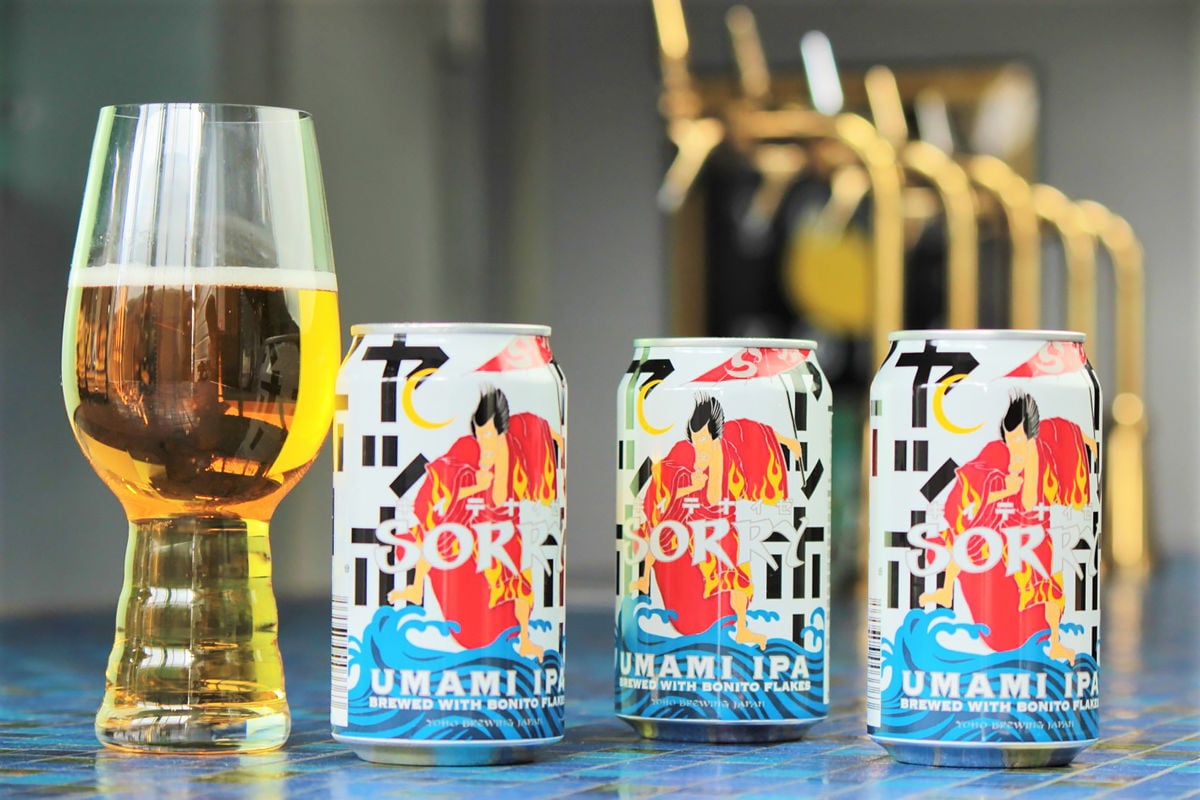
Yoho Brewing
Founded in Nagano in 1996 by Keiji Hoshino after returning from studies in America, YOHO Brewing started relatively early, which has helped cement its status as one of the must-visit craft breweries of Japan. As such, it sits in a comfortable niche of popularity while still remaining agile enough to be creative with its tap list.
Like Karuizawa, YOHO is a fine example of how an aesthetic vision can extend beyond just packaging. The brewery operates on a philosophy of “Flavorful beers for a joyful life,” which translates to a playful, creative selection of beers that showcase the country’s individuality.
Though it controls a significant share of the market, YOHO keeps its tanks small at 600 liters, instead of a more industrial 10,000-liter brewing apparatus, making it possible to experiment and innovate. This dynamic approach keeps the brewery’s ear to the ground and its tanks full of whatever brings to joy to craft drinkers.
Among the perennial favorites at YOHO is “Yona Yona Ale,” (meaning “Every night”) which enlivens drinkers with a piquant, distinctive citrus aroma thanks to a special hopping method that intensifies the bouquet of lemon and stone fruit. This 5.5% ABV American Pale Ale has won multiple gold medals at the International Beer Competition.
There’s also Suiyoubi no Neko, an infinitely thirst-quenching Belgian White brewed using a combination of barley and wheat to round out the body. Classic orange and coriander notes abound, making this beer’s mildly sweet, tart notes and refreshing aroma perfect for the unseasoned craft drinker; or just for somebody who needs a little help getting over Hump Day. The name literally translates to “Wednesday Cat,” as its delightfully cute packaging implies.
Among other standouts is Sorry Umami IPA, every bit as striking to the palate as it is visually. Classified as an “Experimental White IPA,” the umami is “extracted from bonito flakes,” which lends a truly singular element to this beer. Not only do the bonito flakes facilitate fermentation and lend the special “umami” quality, but they also add refreshing, fruity tropical flavors. And, to quote the brewers: “Just in case you’re wondering, this beer doesn't taste like fish!” To know how good it tastes, you’ll just have to try it for yourself.
Though its beer brewing tradition is no older than America’s, Japan’s millennia of rich cultural heritage come bursting through in its freshly energized craft beer scene. Now, they’re bringing that culture to America in the best way possible – through beer! Look for Japanese craft beer on shelves throughout America now.
Images Courtesy JFOODO/Japanese Craft Beer
Want to read more about Japanese Craft Beer?
Discover the fascinating craft beer scene in Japan with the following stories:
Japanese Craft Beer Arrives in the United States
Japanese Craft Beer: Born of the Fruits of the Earth
Wide Range of Ingredients in Japanese Craft Beer Creates Unique Flavor Variety
Where to Find Japanese Craft Beer in Los Angeles and Culver City
Japanese Craft Beer and Ramen: A Match Made in Flavor Heaven



